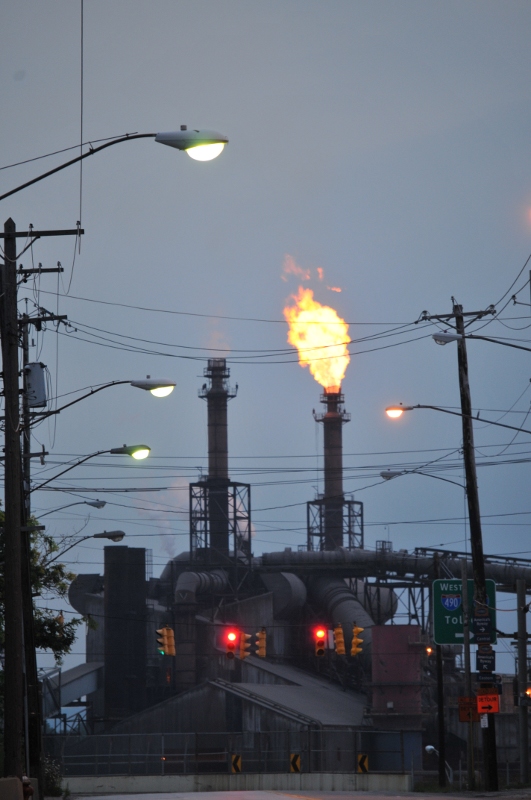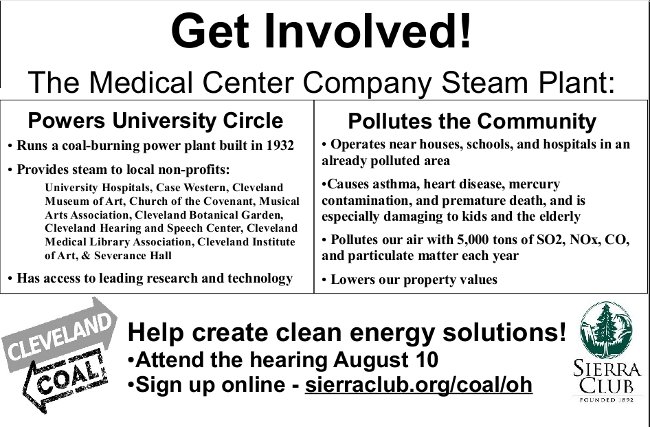Submitted by Norm Roulet on Mon, 09/20/2010 - 11:04.

Greenversations, the official blog of the EPA, has some excellent postings and is worth following - I subscribe to that and all the EPA email updates as they are excellent - dozens a week. Today, Greenversations highlights The Pollution Prevention Act Turns 20, suggesting "If companies, communities and consumers make a concerted effort at eliminating wastes at the source, then perhaps the theme of P2 Week in 2020 can be the arrival of the zero-waste society, one where greenhouse gas emissions, toxic exposures in the home and workplace, waste disposal in landfills and underground wells, and nutrient dumping in our nation’s waters are all a rapidly fading memory."
It is the responsibility of the citizens to make that happen through our actions, VOTING and choices today. In Northeast Ohio, with an EXCESSIVE SHARE of toxic release point sources, and pathetic EPA performance, we need NEW elected officials committed to a 0-waste 0-harm P2 2020 vision - willing to stand up to the big polluters and shut them down - shut down Mittal for real.
Any candidates not committed to a 0-waste 0-harm P2 2020 vision had better speak up now because I am taking out those in office now who have aligned themselves with polluters and I'll be glad to add you to the list - before the next election.

WILL YOU CLEAN UP MITTAL FOR REAL?
DO YOU REALIZE THAT IS ONLY THE BEGINNING?
DO YOU REALIZE THIS IS THE REGION'S TOP PRIORITY... NOT THE OPPORTUNITY CORRIDOR?

The Pollution Prevention Act Turns 20
Posted on September 20th, 2010 - 10:30 AM
It’s not only P2 Week, but the 20th anniversary celebration of the Pollution Prevention Act. I hate to say it, but I’ve been in the P2 business long enough to remember when the law was created (I even had a bit of role in helping create it…but that’s another story). I remember the endless discussions on definitions, the role of P2 in regulations, the importance of P2 accounting, and even debates on whether it should be called “pollution prevention” at all.
Back in the day, P2 was an idea that received a lot of attention and a lot of discussion, but there wasn’t a heck of a lot of activity on the ground that one could point to and say “Here’s P2 in action!” In fact, when I began my environmental career by studying P2 in the chemical industry, we were hard-pressed to come up with actual examples.
It’s a sign of the success of the P2 Act and P2 programs around the country that the situation has totally reversed. P2 may not be the endless gab-fest it was two decades ago, but source reduction activities are happening all over the place, and really having an impact.
The generation of hazardous wastes, TRI wastes, and priority chemical wastes have all decreased, even as the economy has grown. Compliance and enforcement activities have driven P2 solutions, and so has EPA’s P2 grants to states. Programs like Energy Star, Design for the Environment and EPEAT increasingly find themselves using “billions” rather than “millions” to describe their impact on waste streams and cost savings.
With all that’s been accomplished, though, I can’t help feeling that we’ve only just begun to scratch the surface. If companies, communities and consumers make a concerted effort at eliminating wastes at the source, then perhaps the theme of P2 Week in 2020 can be the arrival of the zero-waste society, one where greenhouse gas emissions, toxic exposures in the home and workplace, waste disposal in landfills and underground wells, and nutrient dumping in our nation’s waters are all a rapidly fading memory.
Let’s hope so.
About the author: David Sarokin has worked on pollution prevention since the 1980’s, and is the author of “Cutting Chemical Wastes,” a study of P2 in the chemical industry. He currently resides in a cube in the Pollution Prevention Division at EPA, wishing he were outside.Gree